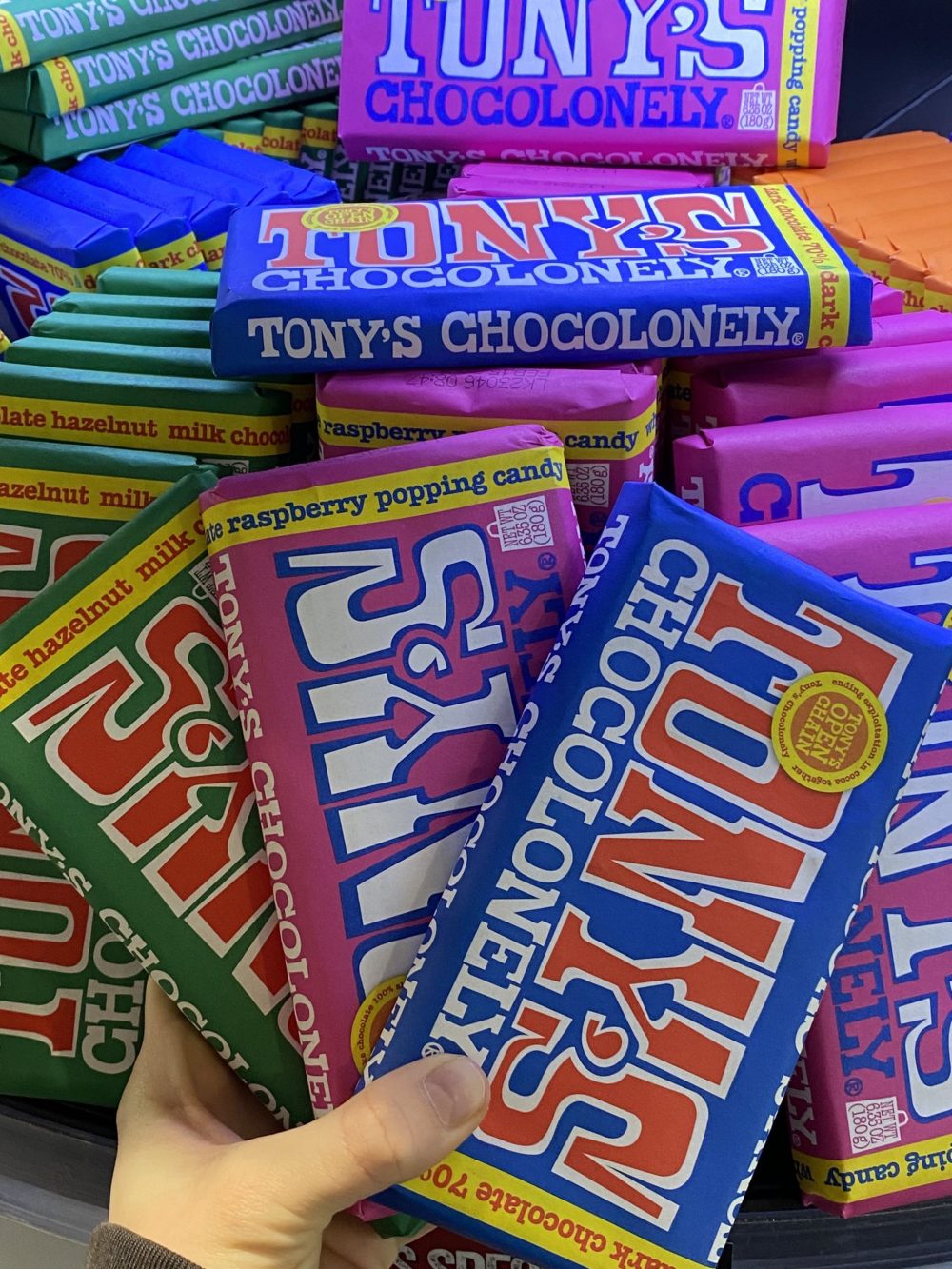Chocolate
Each month I will dedicate a post towards a food product or brand that is either doing good for our planet and or, is a super nutritious choice.
In this first post, I will be reviewing Tony’s Chocoloney because who doesn’t love chocolate!
Unfortunately, the chocolate industry has a big issue with child labour and not much is being done to end it. In this post, I will talk about what Tony’s Chocoloney is doing to solve this problem and how chocolate can be a part of your diet.

Skip to:
What is the problem with the chocolate industry?
Tony’s Chocoloney
The mission
Tony’s Chocoloney’s mission is to end slavery in the chocolate industry.
They not only source their cocoa from ethical, fair-trade farms but they aim to end slavery within the chocolate industry altogether. They aim to do this by creating awareness, partnering with as many key players in the industry to adopt their practices, and leading by example proving that a commercial brand can be successful while paying their workers fairly and ensuring they are in a safe working environment.
The location
Tony’s Chocoloney work with 2 cocoa farms in Ghana (ABOCFA and Suhum Union), and 4 in the Ivory Coast (Kapatchiva, ECAM, ECOJAD and SOCOOPACDI). They maintain a close relationship with these farms and ensure workers are paid well.
Where to buy
Tony’s Chocoloney can be bought from common supermarkets like Coles, Woolworths, and it can also be found at smaller stores like Tony and Marks.
The types/flavours

Tony’s Chocoloney offers a variety of different varieties of chocolate flavours. These include:
- Milk chocolate
- Caramel sea salt
- Milk chocolate almond honey
- Dark almond sea salt
- Milk hazelnut extra dark chocolate
- White raspberry popping candy
- Dark milk pretzel toffee
The price
This product is pricy. One 180g block will cost $8-9. While this product is pricey, it is supporting a good cause.
When buying expensive chocolate, it encourages you to eat it slower and buy it less. This is a good strategy to buy less chocolate and eat sparingly.
What is the problem with the chocolate industry?
The problem is that chocolate brands, especially the most well-known brands, use child slavery to source cacao. Unfortunately, these companies are aware of the issue, yet continue to willingly use these practices and profit from them.
Chocolate comes from large beans grown on cacao trees. The Ivory Coast and Ghana in West Africa produce 70% of the world’s supply of cacao.
Children end up working on these farms either to help out family, are sold by family members to work, or are kidnapped. Not only are these children’s rights being abused, but they are put into dangerous situations and work long hours. They are required to carry heavy and dangerous equipment like chainsaws and machetes. To source the cocoa pods, the children are required to climb trees to cut the cocoa pods off and then need to carry them back through the forest, which can weight up to 45kg. To source the beans, they open the pods by slicing them with sharp equipment resulting in scarring. On top of all this, they are exposed to toxic chemicals from spraying pods with agricultural chemicals.
What is being done?
The chocolate industry itself is not doing nearly enough to end child slavery, in fact, they do their best to release as little information about the origin of cocoa production. The goal to eliminate child labour by 70% in West Africa was set in 2001. This goal has been changed to 2025. This goes to show how little is being done.
Of course, there are brands like Tony’s Chocoloney who are tackling the chocolate issue head on, by not only sourcing fair trade cocoa but also spreading awareness to end it all together. You can help by choosing to purchase chocolate products that source their cocoa ethically. Look out for the white Fairtrade sticker. Some other ethical brands include:
- Tony’s Chocoloney
- Original beans
- Alter eco
To see how other chocolate products compare visit this link
Is chocolate bad for me?
Chocolate can be enjoyed every day in small amounts.
Chocolate is a discretionary food (not a part of the food group), meaning that it does not provide essential nutrients to the body. It is high energy, fat, saturated fat, and sugar which are nutrients to be kept on the low side. However, this doesn’t mean you should never eat chocolate. If you are a healthy individual, 0-2 servings of discretionary foods are acceptable, as recommended by the AGHE. A serving of chocolate would look like half a small bar, or 25g. That would mean one block of Tony’s Chocoloney should last 7 days.
Milk chocolate vs dark
Is one better than the other?
Dark chocolate contains much more cacao (up to 90%) than milk chocolate (as low as 10%). Cacao is the ingredient of chocolate found in the cacao pod. Cacao contains many beneficial nutrients such as antioxidants, protein, fibre and minerals. This is why dark chocolate is considered healthier than milk, because it has more cacao and less sugar and fat.
I hope this post has helped you understand more about the chocolate industry and how to include chocolate in your diet!
Let the posts come to you!
Recent posts
Enter any nutrition and fitness questions below!
Your question might feature in the next post!
Comments are closed